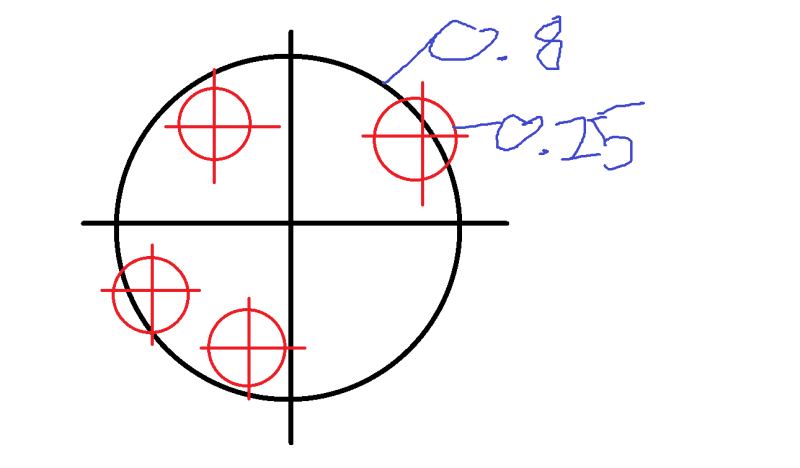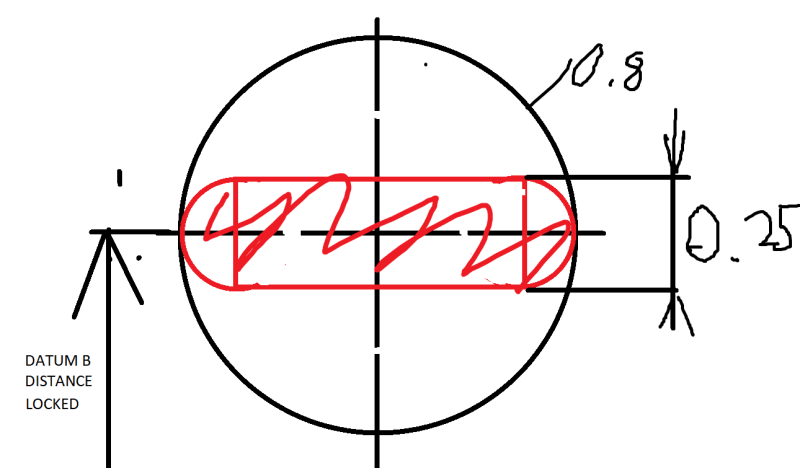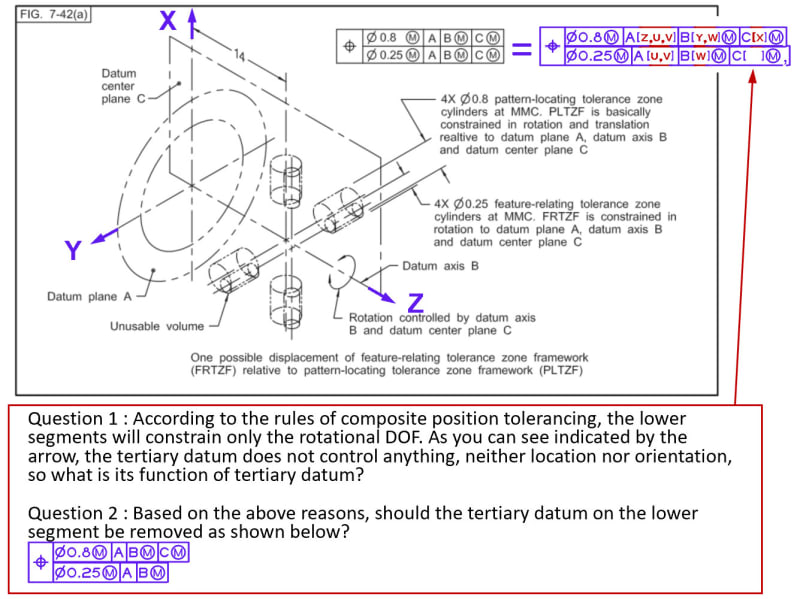Gopinath K
Mechanical
Hi All
Can any one explain exact difference between composite and multi-segment pos tolerance, is Multi segment used for refinement of uppersegment ?
in both lower segment controls orientation and feature relation then what is the difference and how to choose which one to use with same datums.
refer images from asme y 2009 and list the difference pls
image from fig 7.39a and 7.46 c
Can any one explain exact difference between composite and multi-segment pos tolerance, is Multi segment used for refinement of uppersegment ?
in both lower segment controls orientation and feature relation then what is the difference and how to choose which one to use with same datums.
refer images from asme y 2009 and list the difference pls
image from fig 7.39a and 7.46 c




